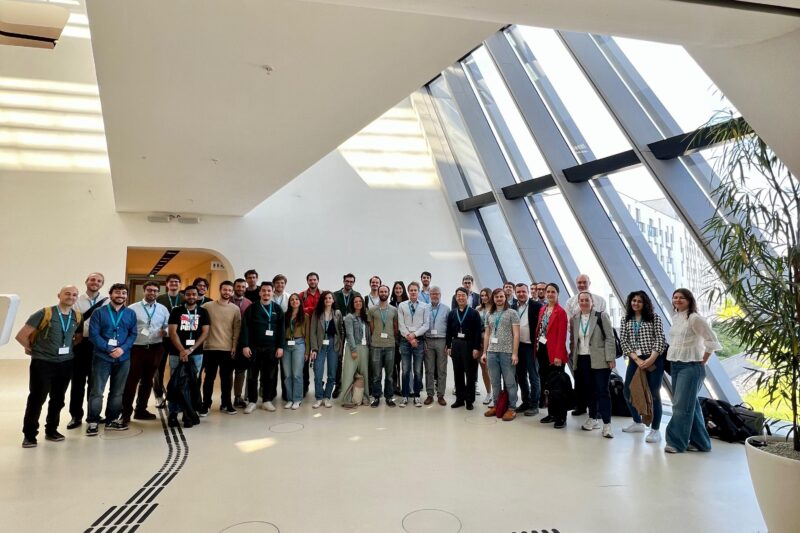
Austrians Hardly Buy Private Insurance Against Occupational Disability
"Private occupational disability insurance is particularly interesting for young, well-trained persons with a potential career ahead of them, such as academics or technical specialists", said insurance expert Thomas Url, one of the authors of the study by the Economic Research Institute (WIFO), in an APA interview: "It is precisely for these occupational groups that the income gap rises on average from 30 to 50 percent of the expected net-lifetime income in the event of occupational disability”. Because the computation of the state's compulsory invalidity pension only takes into account current income levels rather than the future career: "Income is pretended to remain the same until the mandatory pension age". Seen in this light, the product is also exciting for social climbers in other professions.
On average, 25-year-old men lose a third to slightly more than a half of their expected future net lifetime income in the case of risk without additional private insurance – depending on their occupation. For women, it is less than one third or at most slightly less than half of their net lifetime income. With increasing age, the income gap due to occupational disability slowly decreases – at the age of 60 it fluctuates between 6 and 10 percent for men and between 8 and 11 percent for women because of the higher life expectancy (they get their pension longer), explains Url.
Private insurers can cover the risk of occupational disability or the remaining income gap quite cheaply because the probability of occurrence is very low, Url emphasises. For 25-year-olds, only one in 10,000 persons is affected by occupational disability, for 45-year-olds 14 out of 10,000 and for 60-year-olds 110 out of 10,000. Thus 10,000 persons would have to finance only one claim for the group of 25-year-olds together, the expert calculates, "it is therefore a rather rare potentially high damage risk, which is only partially covered by public insurance".
The existing offer of the private insurance industry for an occupational disability pension does not seem to be fully known to the working population. The authors of the study – Thomas Url and Serguei Kaniovski – are convinced that, given the level of potential income losses risk-adverse persons should have a sufficiently high incentive to buy such a product. However, many people may consider a policy to be unaffordable or may have a false perception of the probabilities of occurrence or may have excessive expectations of benefits levels in the public occupational disability insurance. Similar to natural catastrophes, the perception of small risks is often incorrect, says Url.
With a pure "precautionary savings" strategy, i.e. putting aside money for rainy days, the risk of occupational disability cannot be self-insured, say the two experts. Especially at a young age this would require impossibly high savings. Even though public disability pensions compensate for a large part of the income loss, 25-year-olds in occupational groups with a "flat life income profile" would have to save more than a third of their expected lifetime net-income individually in order to fully cover the potential loss of income from occupational disability. For 25-year-olds in academic occupational groups, this would even be 50 percent of lifetime income. Hence, individual savings as a protection against risks with a low probability of occurrence and potentially high damage is unattractive.
Combined with dread disease insurance underwriting of occupational disability insurance is stagnant. The number of insured risks has grown only slightly in recent years. In 2017, 29 million € in premiums were earned from occupational disability insurance – distributed among 60,000 contracts, which means an average of 500 € in annual premiums. In the previous year it was 22 million € in premiums from 43,000 insured risks. The sum insured recently grew from 2 to 2.4 billion €. On average, the insured sums are around 40,000 €, although according to the study an average net loss of income of 170,000 € threatens a 45-year-old.
Url attributes the slight increase of the number of contracts in the past years to the efforts of the insurance industry to bring more risk products onto the market after classical savings products including unit-linked and index-linked policies would no longer sell so well.
Related dread disease insurance policies in Austria last earned a premium of 88 million € a year, but the number of policies has been declining for years, and the latest figure was only 89,000. The main difference to occupational disability insurance is that a dread disease policy pays when a certain disease is diagnosed (e.g. cancer), regardless of whether or not someone becomes disabled for work as a result – money can therefore flow in addition to an active income.
While policyholders are reluctant to purchase a policy or choose instead for underinsurance because it is difficult for them to assess their personal risk, and administrative and brokerage costs are incurred when taking out an insurance policy, the insurance industry is struggling with the phenomenon of "asymmetrical information between suppliers and buyers". "The insured always knows more about himself than the insurance company," says Url. This applies especially to health, accident and life insurance. From the unequal information status then the well-known effects of moral hazard and adverse selection develop. In the first case, insured persons tend to apply for an occupational disability pension although they would remain gainfully employed without insurance cover – while with adverse selection, more risky persons (e. g. with predisposed health conditions) ask for insurance cover. However, negative selection can easily be overcome by staggering deductibles and a restrictive underwriting policy, according to the study commissioned by the Austrian Insurance Association.
























